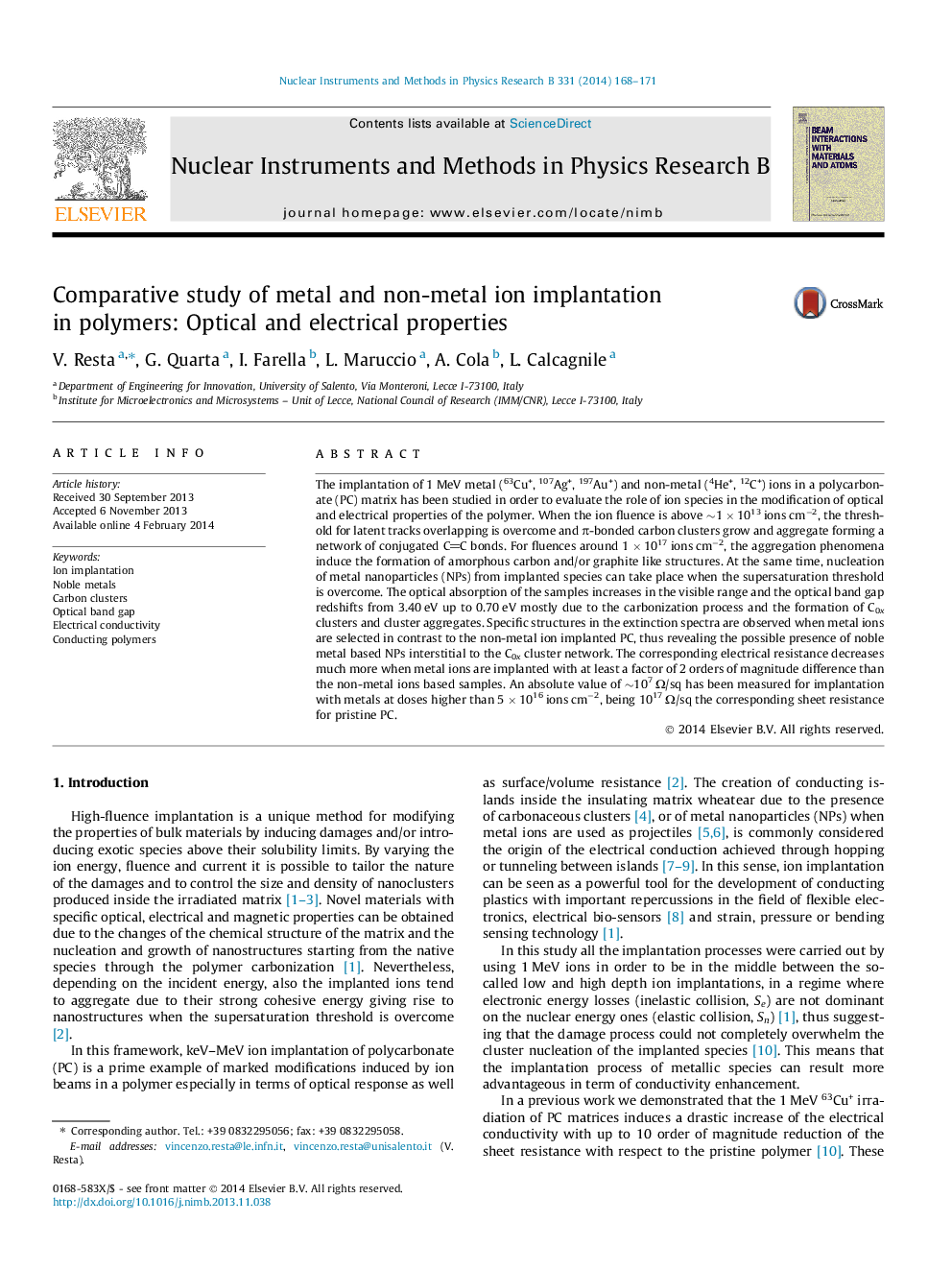| Article ID | Journal | Published Year | Pages | File Type |
|---|---|---|---|---|
| 1681150 | Nuclear Instruments and Methods in Physics Research Section B: Beam Interactions with Materials and Atoms | 2014 | 4 Pages |
The implantation of 1 MeV metal (63Cu+, 107Ag+, 197Au+) and non-metal (4He+, 12C+) ions in a polycarbonate (PC) matrix has been studied in order to evaluate the role of ion species in the modification of optical and electrical properties of the polymer. When the ion fluence is above ∼1 × 1013 ions cm−2, the threshold for latent tracks overlapping is overcome and π-bonded carbon clusters grow and aggregate forming a network of conjugated CC bonds. For fluences around 1 × 1017 ions cm−2, the aggregation phenomena induce the formation of amorphous carbon and/or graphite like structures. At the same time, nucleation of metal nanoparticles (NPs) from implanted species can take place when the supersaturation threshold is overcome. The optical absorption of the samples increases in the visible range and the optical band gap redshifts from 3.40 eV up to 0.70 eV mostly due to the carbonization process and the formation of C0x clusters and cluster aggregates. Specific structures in the extinction spectra are observed when metal ions are selected in contrast to the non-metal ion implanted PC, thus revealing the possible presence of noble metal based NPs interstitial to the C0x cluster network. The corresponding electrical resistance decreases much more when metal ions are implanted with at least a factor of 2 orders of magnitude difference than the non-metal ions based samples. An absolute value of ∼107 Ω/sq has been measured for implantation with metals at doses higher than 5 × 1016 ions cm−2, being 1017 Ω/sq the corresponding sheet resistance for pristine PC.
